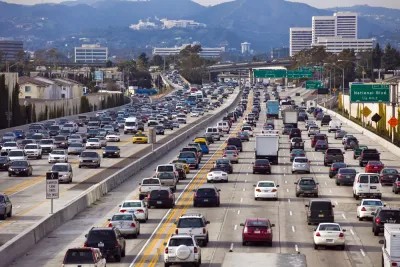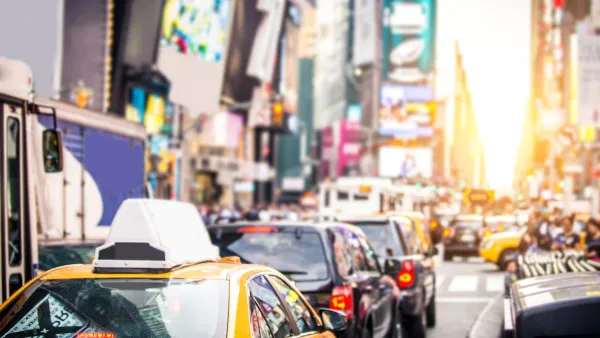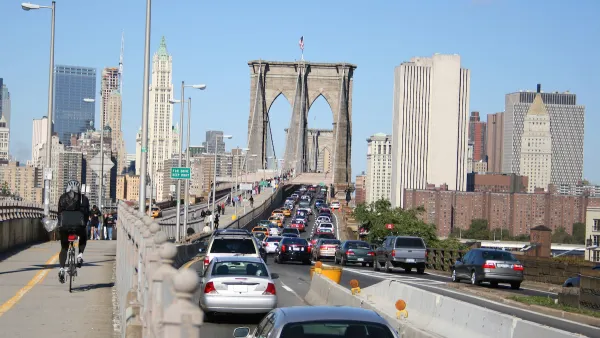A New York Times article marks the historic significance of congestion pricing—gone are the days of treating roads like they're free while ignoring their costs.

Emily Badger writes on the subject of congestion pricing, the major transportation reform under consideration in Los Angeles and well on the way to implementation in New York City. According to Badger, the idea of charging drivers to enter parts of Manhattan, also known as Cordon Pricing, could enact a generational shift in the conventional thinking about transportation:
Congestion pricing has the potential to significantly change how traffic flows through Manhattan streets, how commuters get around the city, how companies like Uber and Lyft operate.
But most radically, if the policy spreads it could challenge a deeply embedded cultural idea, requiring people to pay for something Americans have long demanded — and largely believe they’ve gotten— free of charge.
Congestion pricing would end the illusion of driving as an entitlement, according to Badger. Instead, congestion pricing treats roads as a valuable and scarce resource.
Badger cites experts in transportation planning, such as Michael Manville, professor of urban planning at the University of California, Los Angeles, Kari Watkins, a professor at Georgia Tech’s School of Civil and Environmental Engineering, Jeffrey Tumlin, a transportation consultant at Nelson\Nygaard, Peter Norton, a historian at the University of Virginia, and more.
The purview of the article draws on a history of treating roads as an entitlement back, before explaining the conditions that have created the political will in 2019 to reform many of the massive entitlements afford cars and drivers since the 1920s and '30s. The final word is left to Manville, who says, "Fortunately, congestion pricing comes with its own built-in solution, which is that it raises a ton of money."
FULL STORY: The Streets Were Never Free. Congestion Pricing Finally Makes That Plain.

Analysis: Cybertruck Fatality Rate Far Exceeds That of Ford Pinto
The Tesla Cybertruck was recalled seven times last year.

National Parks Layoffs Will Cause Communities to Lose Billions
Thousands of essential park workers were laid off this week, just before the busy spring break season.

Retro-silient?: America’s First “Eco-burb,” The Woodlands Turns 50
A master-planned community north of Houston offers lessons on green infrastructure and resilient design, but falls short of its founder’s lofty affordability and walkability goals.

Test News Post 1
This is a summary

Analysis: Cybertruck Fatality Rate Far Exceeds That of Ford Pinto
The Tesla Cybertruck was recalled seven times last year.

Test News Headline 46
Test for the image on the front page.
Urban Design for Planners 1: Software Tools
This six-course series explores essential urban design concepts using open source software and equips planners with the tools they need to participate fully in the urban design process.
Planning for Universal Design
Learn the tools for implementing Universal Design in planning regulations.
EMC Planning Group, Inc.
Planetizen
Planetizen
Mpact (formerly Rail~Volution)
Great Falls Development Authority, Inc.
HUDs Office of Policy Development and Research
NYU Wagner Graduate School of Public Service




























